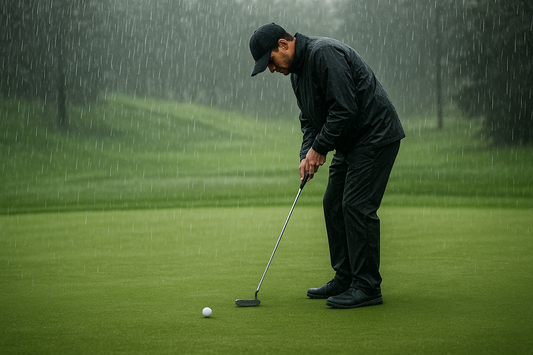I watched a scratch golfer completely fall apart on a windy Saturday morning, missing four putts inside eight feet. The same guy who'd shot 74 the day before in perfect conditions couldn't buy a putt when the wind picked up. He kept using the same stroke, same read, same approach—completely ignoring that Mother Nature had changed the rules.
Most golfers treat putting as if it happens in a laboratory. But weather conditions dramatically affect green speed, ball roll, and even your ability to read breaks. Adapting your technique to conditions is the difference between steady putting and watching your score balloon.
Understanding Green Speed Changes

Before you adjust your stroke, you need to understand how the weather affects green speed. Temperature, humidity, wind, and moisture create constantly changing conditions that can make the same green play completely different from morning to afternoon.
Green speeds aren't just about maintenance—they're about physics. Hot, dry conditions make greens faster. Cool, humid mornings make them slower. Learning to gauge these changes will transform your distance control.
Hot, Dry Conditions: The Speed Demons

When temperatures soar and humidity drops, greens become lightning fast. The grass blades stand straighter, moisture evaporates, and suddenly your normal stroke sends putts racing past the hole like they're on ice.
Key strategies for hot, dry greens:
-
Shorten your backswing significantly
-
Focus on smooth acceleration through impact
-
Expect 15-20% more roll than normal conditions
-
Pay attention to afternoon speeds—they're typically fastest
-
Consider more break as balls roll farther and hold lines longer
Cool, Humid Mornings: The Soft Touch

Early morning rounds in humid conditions create slower, softer greens. Dew, moisture in the air, and cooler temperatures make grass blades lay flatter and create more friction. Your normal stroke might leave putts consistently short.
Key strategies for cool, humid conditions:
-
Increase backswing length for the same distance
-
Commit to your stroke—tentative putting gets worse on slow greens
-
Expect 20-25% less roll than dry conditions
-
Read less break as balls don't hold lines as long
-
Be aggressive on uphill putts that won't run past
Windy Conditions: The Mental Game

Wind doesn't affect the ball much once it's rolling, but it wreaks havoc on your setup, alignment, and confidence. Strong gusts can throw off your balance during the stroke, and the constant movement makes it harder to focus on your target.
Key strategies for windy putting:
-
Widen your stance for better stability
-
Take more time to settle over the ball
-
Focus on smooth tempo—don't fight the wind with quick strokes
-
Use intermediate targets for alignment
-
Accept that some putts will feel uncomfortable
Rain and Wet Greens: The Great Equalizer

Wet greens are slow greens, but they also create the most dramatic changes in putting conditions. Water can pool in low spots, create temporary breaks, and make grain patterns nearly irrelevant as moisture dominates ball roll.
Key strategies for wet conditions:
-
Hit putts more firmly since wet greens absorb energy
-
Play for less break as water reduces slope effects
-
Watch for casual water that creates temporary slopes
-
Clean your ball frequently for consistent roll
-
Be patient with speed as wet greens can be unpredictable
Altitude and Air Pressure: The Hidden Factors

Higher altitudes and changing air pressure affect putting more than most golfers realize. Thinner air at elevation can make greens play faster, while low-pressure systems can create surprisingly sluggish conditions even on well-maintained surfaces.
Key strategies for altitude changes:
-
Expect faster greens at higher elevations
-
Adjust gradually—altitude effects are subtle but consistent
-
Pay attention to barometric pressure and remember low pressure slows greens
-
Trust your practice green reads more than visual assumptions
Final Thoughts
Weather isn't an excuse for poor putting. Think of it as information you can use to your advantage. Start paying attention to conditions, adjust your short game and putting accordingly, and watch your putting average improve regardless of what Mother Nature throws at you.





